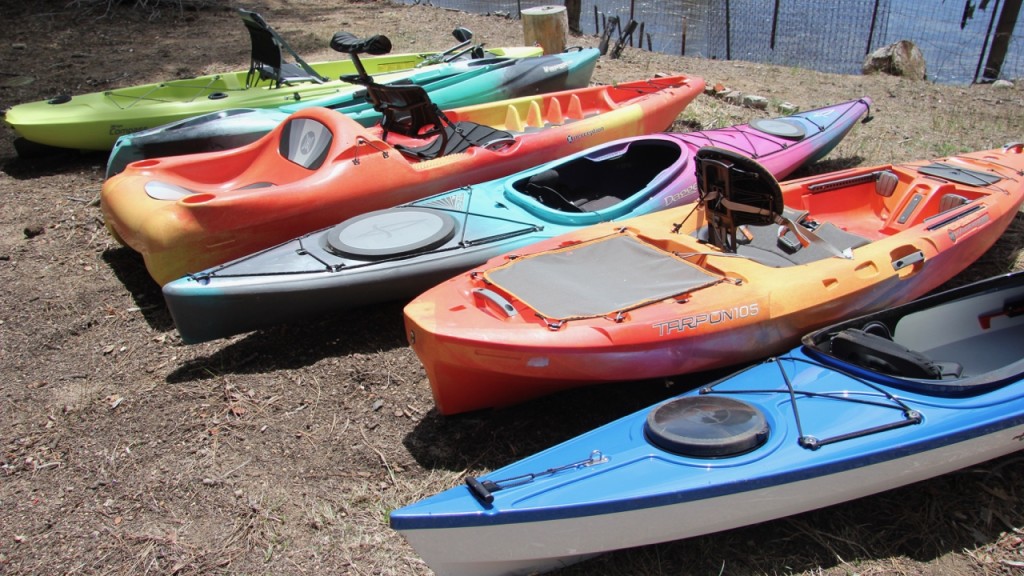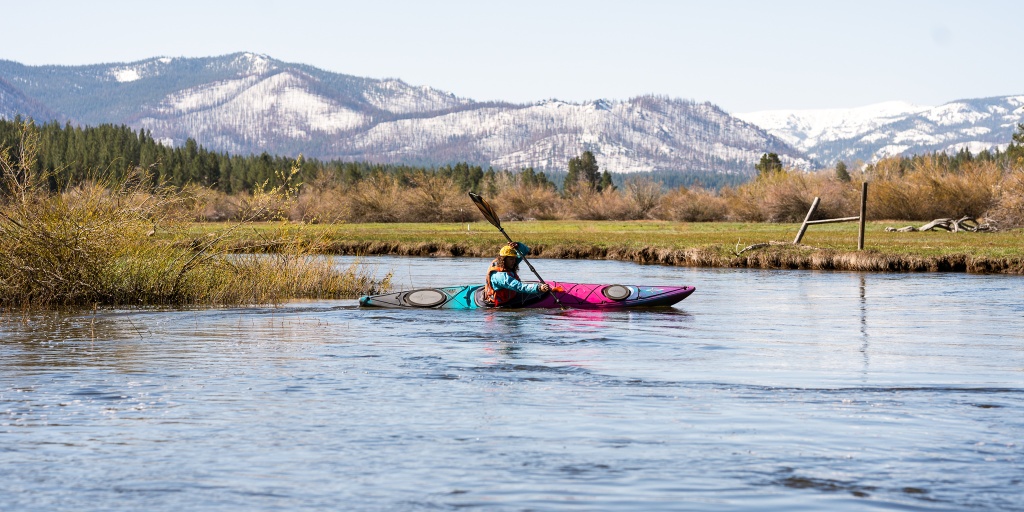Kayaking offers many opportunities for recreation, adventure, and exercise, particularly in breathtaking locations. Although (almost) any boat can provide an enjoyable experience on the water, certain models offer superior performance, enhanced comfort, are easier to maneuver, and are easier to transport to and from the water.
Keeping these factors in mind, we carefully selected some of the most popular and top-performing kayaks on the market and took them to Lake Tahoe and other alpine lakes and rivers in the High Sierra region. For three months, we thoroughly tested and retested the kayaks under various conditions, pushing them to their limits.
To ensure comprehensive evaluations, we used each kayak in various conditions and scenarios. We spent ample time paddling on serene mornings when the water was calm and during busy afternoons when winds and frequent boat wakes challenged the kayaks' performance. Additionally, we enjoyed navigating gentle Class I-II river runs in each kayak, testing their ability to handle currents and rapids. After all this field testing, we put these popular crafts through our meticulous metrics, testing and rating each model on its glide and tracking, stability, maneuverability, comfort, ease of transport, and construction quality. Here's how we did it.
Glide and Tracking
We paddled each boat to maximum speed and then abruptly stopped paddling when we reached an assigned marker, allowing the kayak to glide freely on the water after this point. We measured the distance between the buoy and the spot the kayak stopped, noting how well it kept its line. We also conducted timed 50-meter sprint tests in each kayak, repeating tests three times to best account for uncontrollable variables.
Stability
We tested the kayaks' primary stability on flat water, observing how steady and balanced it felt when not actively paddling. We noted how each kayak responded to weight shifts when paddling and how it felt to get into and out of the kayak. To test the dynamic stability, we assessed how it felt while on the move, including when turning corners and encountering currents. We experimented with leaning and edging each kayak, observing which models wobbled and which excelled.
We then took this test to the next level, paddling each kayak through waves and rapids, rocking the kayaks aggressively from side to side, standing up in them, and even jumping up and down to see if each can withstand your next adventure, kayak game, or attempts of your friend or dog to climb aboard.
Maneuverability
First, on flat water, we counted how many paddle strokes it took to turn each boat 360 degrees from a standstill. We then timed each kayak while navigating a series of buoys, taking note of how much effort it required to turn. We paddled each boat on gentle moving water, cruising into and out of eddies and recording the effort it took to control each one. To test maneuverability in more dire situations, we capsized each kayak and timed how quickly we could re-right and drain it in order to perform a self-rescue.
Ease of Transport
Some kayaks were easier to carry than others, and some weighed much more than the other models. The type and position of the handles can also make a huge difference in how the kayak is balanced. If we hated carrying it, picking it up to put it on a car, or dragging it across the beach, it didn't score well. Those we could carry and load on our own scored the highest. The hull shape and the location of different features can also impact how easy it is to load and tie-down a kayak, as well as how safely you can transport it.
Comfort
We've spent a lot of time in these boats over the years and rate them based on how much we did or didn't whine. We analyzed how it felt to sit in each of these kayaks for prolonged periods, and all of the boats we tested were paddled by people of varying sizes, noting if there were any particular points of discomfort. We also listened to celebrations and complaints of others on the rivers and lakes, on the internet, and from our extensive paddling community.
Construction Quality
This score is based on our knowledge of the materials and technologies used to construct each kayak — how well these are known to stand the test of time, how sturdy they feel, and how many scrapes and dents each boat had at the end of testing. We also looked over all the seats, straps, bungees, handles, hatches, and latches and read other user reviews, looking for any trends in customer complaints.








